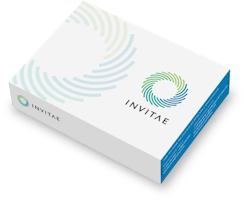
Invitae Primary Hyperoxaluria Panel
Test code: 06227 •
Test description
The Invitae Primary Hyperoxaluria panel analyzes 3 genes associated with primary hyperoxaluria, a disorder of glyoxylate metabolism associated with renal damage that may progress to kidney failure.
Ordering information
Turnaround time:
10–21 calendar days (14 days on average)New York approved:
YesPreferred specimen:
3mL whole blood in a purple-top EDTA tube (K2EDTA or K3EDTA)Alternate specimens:
Saliva, buccal swab, and gDNA are also accepted.Learn more about specimen requirementsRequest a specimen collection kitClinical description and sensitivity
Clinical description:
The primary hyperoxalurias are inherited disorders of glyoxylate metabolism in which hepatic peroxisomal enzyme deficiencies result in excessive production of oxalate. The excess oxalate cannot be degraded and is excreted in large amounts by the kidneys, resulting in high urinary oxalate levels. Insoluble calcium oxalate crystals accumulate in the kidneys, leading to nephrolithiasis and nephrocalcinosis, which may progress to end-stage renal disease (ESRD) and systemic oxalosis (PMID: 1433562, 23334384).
Most patients present with signs or symptoms related to kidney stones. Kidney stones are present in 65% of patients before 10 years of age and in 85% before 20 years of age. A minority of patients present with failure to thrive and ESRD due to calcification of kidney tissue without discrete kidney stones. Recurring stones throughout childhood, adolescence, and adulthood are characteristic. Over time, however, progressive renal damage leads to reduced kidney function that can be evident as early as 4 months of age. In up to 30% of cases the diagnosis was not confirmed until patients reached end-stage renal failure (PMID: 22688746).
Effects on kidney function vary by type. Patients with PH1 showed a median age at progression to kidney failure of 33 years (PMID: 15961949, 20016466). Patients with PH2 and PH3 appear to have better outcomes, with a preservation of renal function in most of the cases.
Assay information
Invitae is a College of American Pathologists (CAP)-accredited and Clinical Laboratory Improvement Amendments (CLIA)-certified clinical diagnostic laboratory performing full-gene sequencing and deletion/duplication analysis using next-generation sequencing technology (NGS).
Our sequence analysis covers clinically important regions of each gene, including coding exons and 10 to 20 base pairs of adjacent intronic sequence on either side of the coding exons in the transcript listed below, depending on the specific gene or test. In addition, the analysis covers select non-coding variants. Any variants that fall outside these regions are not analyzed. Any limitations in the analysis of these genes will be listed on the report. Contact client services with any questions.
Based on validation study results, this assay achieves >99% analytical sensitivity and specificity for single nucleotide variants, insertions and deletions <15bp in length, and exon-level deletions and duplications. Invitae's methods also detect insertions and deletions larger than 15bp but smaller than a full exon but sensitivity for these may be marginally reduced. Invitae’s deletion/duplication analysis determines copy number at a single exon resolution at virtually all targeted exons. However, in rare situations, single-exon copy number events may not be analyzed due to inherent sequence properties or isolated reduction in data quality. Certain types of variants, such as structural rearrangements (e.g. inversions, gene conversion events, translocations, etc.) or variants embedded in sequence with complex architecture (e.g. short tandem repeats or segmental duplications), may not be detected. Additionally, it may not be possible to fully resolve certain details about variants, such as mosaicism, phasing, or mapping ambiguity. Unless explicitly guaranteed, sequence changes in the promoter, non-coding exons, and other non-coding regions are not covered by this assay. Please consult the test definition on our website for details regarding regions or types of variants that are covered or excluded for this test. This report reflects the analysis of an extracted genomic DNA sample. In very rare cases, (circulating hematolymphoid neoplasm, bone marrow transplant, recent blood transfusion) the analyzed DNA may not represent the patient's constitutional genome.
You can customize this test by clicking genes to remove them.
Primary panel
Question about billing?
Find answers